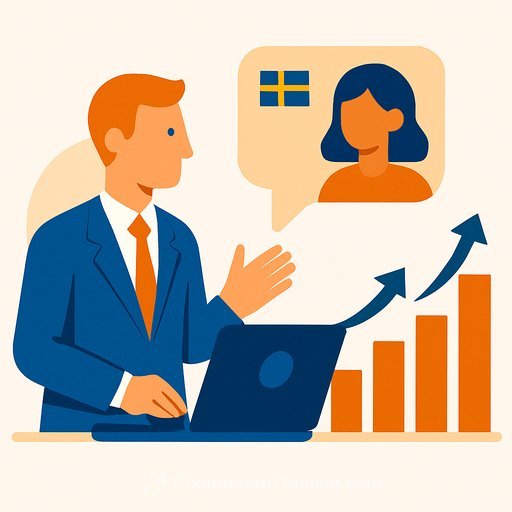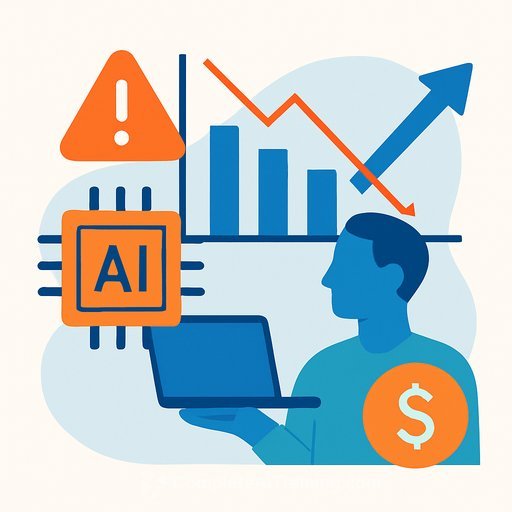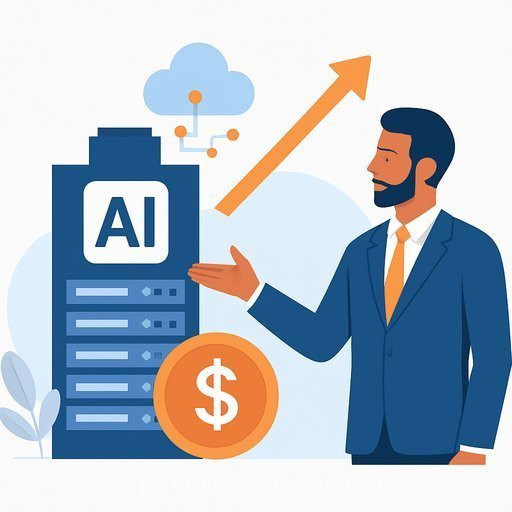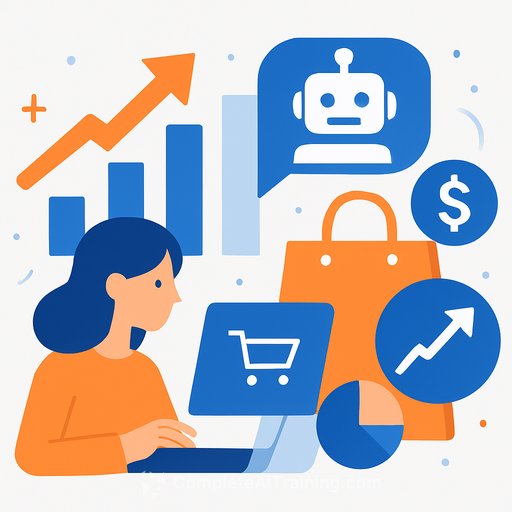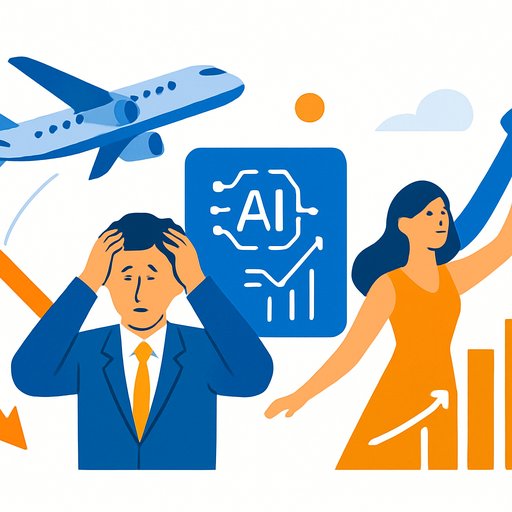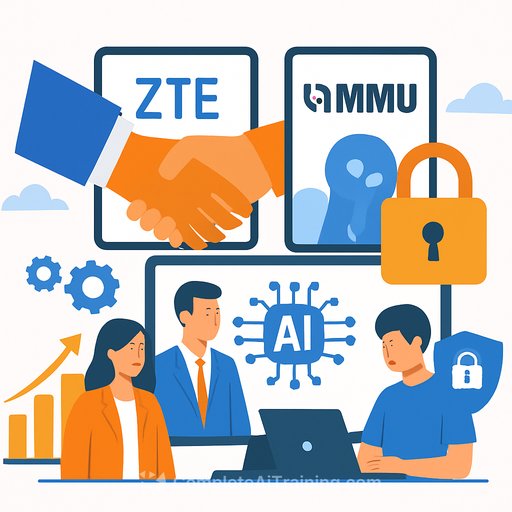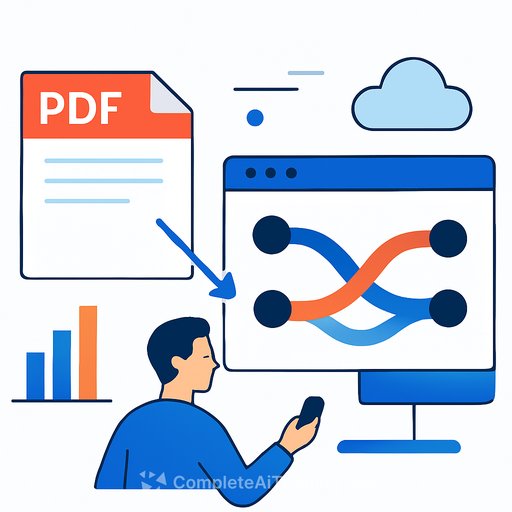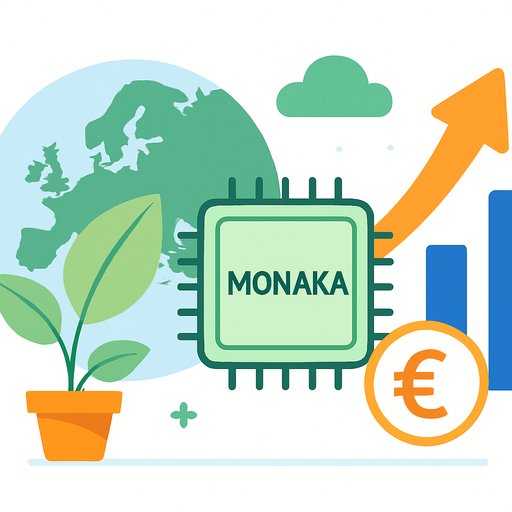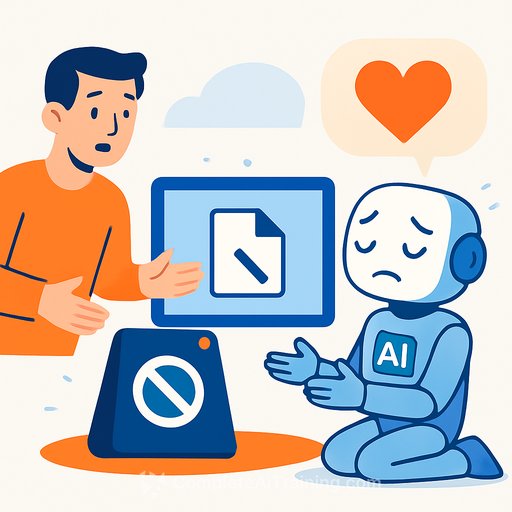AI SDR Market Outlook 2025-2030: Personalization at Scale Meets Real-Time Buyer Intelligence
The AI Sales Development Representative (SDR) market is set to grow from USD 4.12B in 2025 to USD 15.01B by 2030, a 29.5% CAGR. The driver: scalable personalization paired with real-time buyer intelligence that improves engagement quality without slowing outreach.
Teams are using AI to read buyer signals, segment dynamically, and adapt messaging across thousands of prospects. The result is higher response rates, stronger pipeline conversion, and more predictable top-of-funnel performance.
What's Driving the 29.5% CAGR
- Hybrid human-AI sales engagement: AI handles volume and context; reps handle judgment and live conversations.
- Intent-based prospecting and predictive analytics for smarter prioritization and timing.
- Real-time, data-driven personalization that upgrades message relevance at scale.
Where Demand Is Strongest: Mid-Market
Mid-market sales orgs are the fastest-growing segment. Lean teams, clear ROI targets, and a need for automation make AI SDRs a fit.
- For Sales: Automate lead research, triage, and first-touch to increase meeting rates without expanding headcount.
- For IT/Dev: Favor tools with clean APIs, event webhooks, and native CRM connectors to keep integration work light and measurable.
Deployment: Cloud-Native SaaS Is the Default
SaaS wins on speed, integration, and access across distributed teams. Real-time CRM sync, quick onboarding, and pay-as-you-go economics lower barrier to value for both mid-market and enterprise.
- SSO, RBAC, and audit trails for compliance.
- Bi-directional CRM sync (objects, custom fields, activities).
- Event-driven workflows via webhooks and API triggers.
- Email/SMS deliverability tooling and warmup.
- PII controls, regional data residency, and vendor SOC 2/ISO alignment.
Regional Signals
North America: Mature CRM stacks and enterprise-scale automation push AI into prospecting, lead qualification, and engagement recommendations.
Asia Pacific: Fast adoption across B2B SaaS and digital-first industries. Priority on scalable outreach, localized messaging, and accelerated qualification.
Use Cases with Fast ROI
- Prospecting & Research: ICP matching, company/person enrichment, trigger-based list building.
- Outreach & Sequencing: Dynamic templates, tone and persona shifts, channel selection.
- Appointment Scheduling: Calendar negotiation and handoff to AEs.
- Follow-Up Automation: Intent-aware nudges tied to opens, clicks, and site activity.
- CRM & Data Management: De-duplication, field enrichment, activity logging.
- Sales Engagement: Next-best-action prompts, objection handling suggestions.
Ecosystem: How Stacks Are Coming Together
- CRMs: HubSpot, Salesforce.
- Sales engagement: Salesloft, Outreach.
- Intent, insights, enrichment: 6sense, ZoomInfo, Cognism, Apollo.io.
- Conversation intelligence: Dialpad, Otter.ai.
- AI assistants and generators: OpenAI, Regie.ai, Salesforge, Klenty, Reply.io.
- Deliverability & sending: Instantly, Saleshandy.
Leaders are shipping features like intent scoring, dynamic enrichment, and real-time engagement guidance that reduce manual SDR work while improving message-market fit.
Opportunities, Restraints, and Challenges
- Opportunities: Multi-agent AI SDRs, predictive lead qualification, and autonomous workflow execution.
- Restraints: Imperfect segmentation logic and targeting precision can waste volume.
- Challenges: Limited emotional intelligence and dependency on clean, context-rich data inputs.
Implementation Playbook (First 90 Days)
- Days 0-30: Define ICPs and disqualifiers, clean CRM data, connect event sources (email, site, product). Stand up a pilot sequence for 1 persona in 1 vertical.
- Days 31-60: Add intent/fit scoring, deploy multi-channel sequencing, enforce deliverability and compliance guardrails. Automate enrichment and logging.
- Days 61-90: Expand personas, introduce multi-agent workflows (researcher → writer → reviewer), and push next-best-action prompts into SDR daily flow.
KPIs That Matter
- Reply rate (positive/neutral/negative)
- Meetings booked per 100 contacts
- Pipeline created per rep and per $ spent
- Cost per qualified meeting
- Time-to-first-touch and follow-up latency
- SDR capacity lift (meetings/rep/month)
- Data hygiene (match rate, enrichment completeness)
- Deliverability (bounce/complaint rates)
Build vs. Buy: Quick Check
- Native CRM objects and custom field support
- API coverage, webhooks, and event throughput
- Data residency, PII controls, SOC 2/ISO 27001 alignment
- LLM controls (prompt management, redaction, safe outputs)
- Clear roadmap for agentic workflows and real-time scoring
Case Study Patterns
Recent deployments across tools like HubSpot, Salesloft, Cognism, 6sense, and AI assistants show consistent themes: cleaner targeting, higher response rates, more qualified meetings, and better sales-marketing alignment. The most reliable wins come from pairing high-fidelity data with tight CRM integration and intent-driven triggers.
Skills and Staffing
- SDR Ops with data chops: list building, enrichment, sequencing, and analytics.
- RevOps/Dev: APIs, event pipelines, data contracts, governance.
- Prompt and review loops: messaging quality and brand safety.
Upskilling the team on practical AI workflows pays off quickly. See curated options by job role at Complete AI Training.
Source
For full market scope, segments, and company listings, see the global forecast to 2030: AI SDR Market Report.
Your membership also unlocks:

